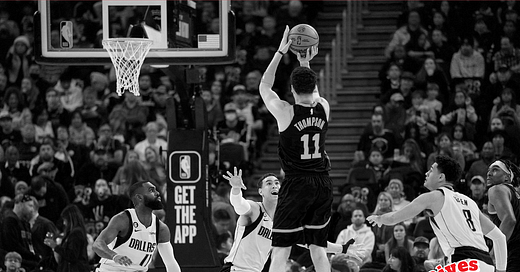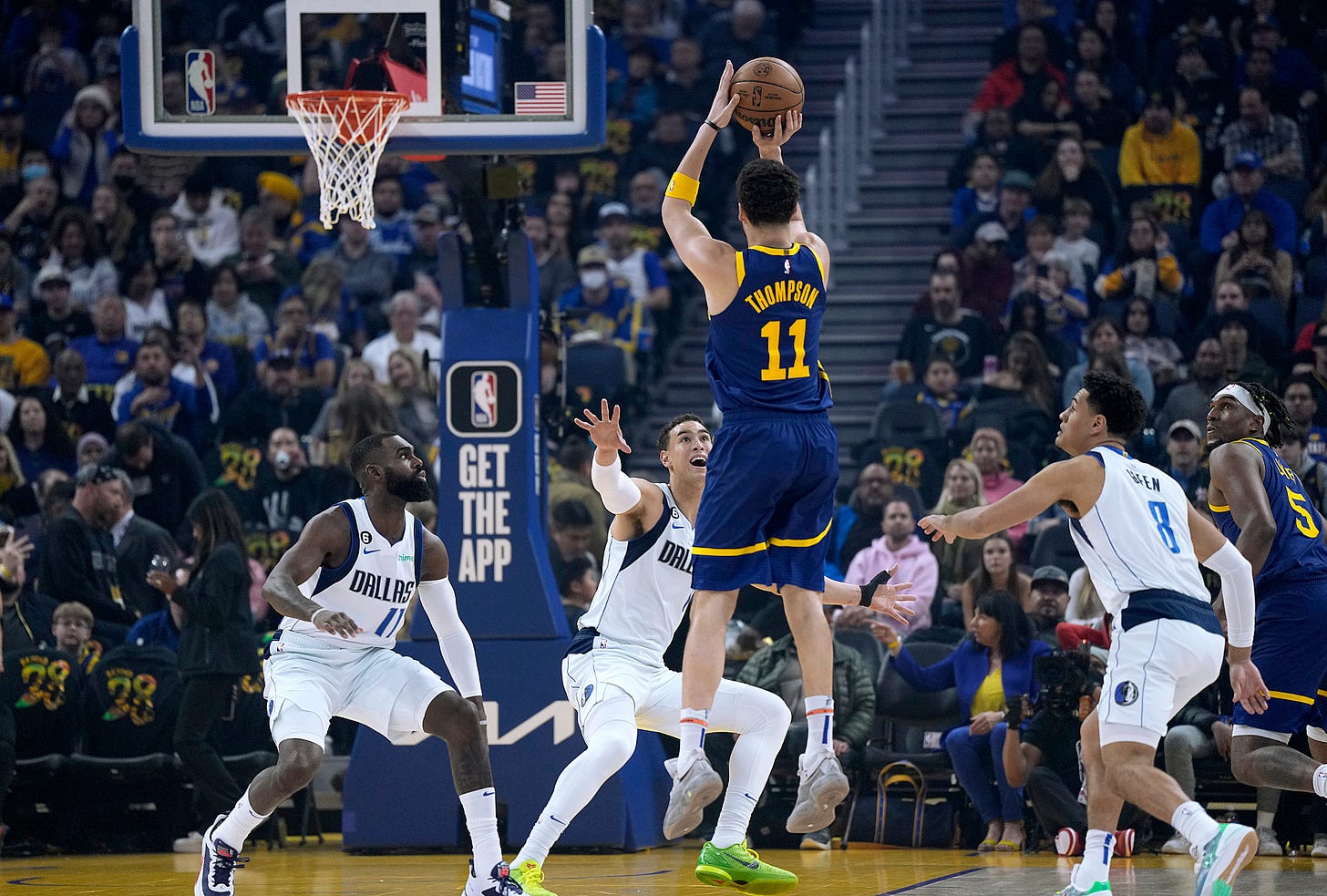Before we start, let me say this is the second of our offseason deep-dives. There will be more to come, and they will be available to my free subscribers over the next couple of weeks. If you like them and want to support my work, please subscribe, or upgrade to paid if you can spare a couple of dollars. All your support is appreciated and will help me do even better work.
The team makeover that Nico Harrison pulled off at last trade deadline was not only the main story of the last Mavericks season, but it might have also been the best success story of the last NBA season. A team that couldn't climb out of the bottom of the defensive rankings suddenly transformed into a top ten defense (post-deadline) and fought their way to the Finals by getting stops and outhustling opponents.
Harrison's blueprint for transformation was clear: surround Luka Dončić and Kyrie Irving with length, athleticism, and defensive-minded players willing to do the dirty work. It started before the deadline moves, by drafting Dereck Lively II and finding gems in Derrick Jones Jr. and Dante Exum on minimum contracts. Then, with the deadline moves that brought in Daniel Gafford and P.J. Washington, a team that used to be one of the smallest in the league added much-needed size inside. A finesse team that lived and died by the three-point shot began to attack the rim.
But while replacing Grant Williams (third in total minutes pre-trade deadline) with Washington and significantly reducing the minutes of Tim Hardaway Jr. (second in total minutes pre-trade deadline), Dwight Powell, and Jaden Hardy did wonders for the Mavericks' defense, it also had a side effect on the other side of the ball.
Spacing and math problems
After the trades, I tweeted several times that the Mavericks traded shooting and spacing for size and defense. It’s a tradeoff they were happy to live with, but it would cost them in some games. Here's an observation from a game against the Celtics in January, when Boston took advantage of the lack of shooting in the Jones-Lively lineups.
It was a glimpse of what happened later in the playoffs and reached its peak in the Finals, when Jones was often left open with his defender roaming, helping, or doubling regardless of where he stood on the floor. Josh Green, another reluctant three-point shooter, received similar treatment. It was the same tactic the Mavericks themselves successfully used against Josh Giddey and OKC in the second round.

The Mavericks' three-point volume dropped significantly after the deadline. They ranked second in the NBA with a 42.3 percent three-point frequency (the percentage of team field goal attempts that are three point attempts) before February 9th (Boston was first at 43.7 percent), but dropped to 7th overall post-deadline with 38.7 percent, which was still slightly above the league average of 36.3 percent. In the playoffs, the Mavericks' share of three-point shots declined further to 36.4 percent, which was below the playoff average (Boston led all teams in the playoffs at 44.5 percent).
In the Finals, the disparity, or the math problem, became drastic: Dallas had a 32.9 percent three-point frequency compared to Boston's 46.7 percent.
The Mavericks' offense relies heavily on Dončić's and Irving's ability to find and punish mismatches, but having a non-shooter in the lineup means more collapsed defense, making it harder to exploit a mismatch in isolation. The Mavericks' two most-used lineups in the playoffs were Dončić/Irving/Jones/Washington/Gafford and Dončić/Irving/Jones/Washington/Lively, both featuring two non-shooters. Dončić was banged up for most of the playoffs, but having to work harder and take more difficult shots was another big reason why both he and Irving scored below their regular season and prior playoffs averages.
Now, I'm not saying that the Mavericks should go back to the old ways of being overly dependent on the three-ball. Watching them shut teams down and win with hustle and defense in the playoffs was too much fun. But the offseason moves were clear signs that Harrison and co. saw a problem and wanted to address it.
Summer re-calibration
The Mavericks' offseason moves, all but perhaps one (the Naji Marshall signing), follow a clear pattern of adding players who are not hesitant to let it fly from beyond the arc.
If you look at the new faces and the players they are replacing in the rotation, each of them is a clear upgrade in terms of shooting gravity and spacing.
Willingness to shoot (measured by 3PA per 100 possessions) and how teams defend them (% of 3PA heavily contested) are two indicators that are more significant to me than just looking at 3P%.
One cannot think of a better way to improve spacing than adding Klay Thompson, the best high-volume spot-up three-point shooter in the NBA over the last three seasons (see the chart below, upper right elite quadrant of high volume/high accuracy).
Thompson is literally a much better version of Hardaway, and we have a large sample size of evidence of how that works on offense in Dallas. Lineups with Dončić and Hardaway have an offensive rating of 119.4 points per 100 possessions (really good) over the last five seasons and have consistently ranked at the top in three-point volume. And when I think about it, it's not Hardaway (whose minutes were in steep decline well before the playoffs) that Thompson will be replacing. Jones and Green averaged a combined 48 minutes in the playoffs at the small forward spot. Assuming Thompson starts next to Dončić and Irving, he'll be taking most of those minutes. Defensively, there will be things to figure out, but going from two guys who were ignored to one of the most tightly guarded shooters is an incredible shift.
Grimes is another high-volume spot-up three-point shooter, who I think will be a big upgrade over Green and Jones in that department. If you missed my deep dive on him and how he compares to the Mavericks' past 3-and-D options, you can find it here.
Exum exceeded all expectations last season by filling the third ballhandler spot and making threes at a very high rate. But like Green, he's a hesitant shooter whom teams dared to shoot in the playoffs. Now, the return of Spencer Dinwiddie gives Jason Kidd an alternative if he wants more offense, shooting and spacing on the floor in that role.
Hence, even two moves at the end of the roster followed the same pattern of adding wing defenders who are not hesitant to let it fly. Melvin Ajinca, the 51st pick who the Mavericks acquired on draft night in June, is a 3-and-D prospect whose two-thirds of shots came from beyond the arc last season (comps to other similar French prospect available here). And the 23-year-old forward Kessler Edwards, the last addition to the roster on a two-way contract, is a much more willing and confident three-point shooter than Olivier-Maxence Prosper, who he might compete with for minutes on the wing.
As you can see from the moves, adding shooting was clearly a priority that the Mavericks' front office successfully addressed this summer. Adding a player of Thompson's caliber and gravity, along with other moves, should propel the Mavericks back to elite (top 5?) offense territory. If not, it should at least put an end to the Mavericks' math problems.








